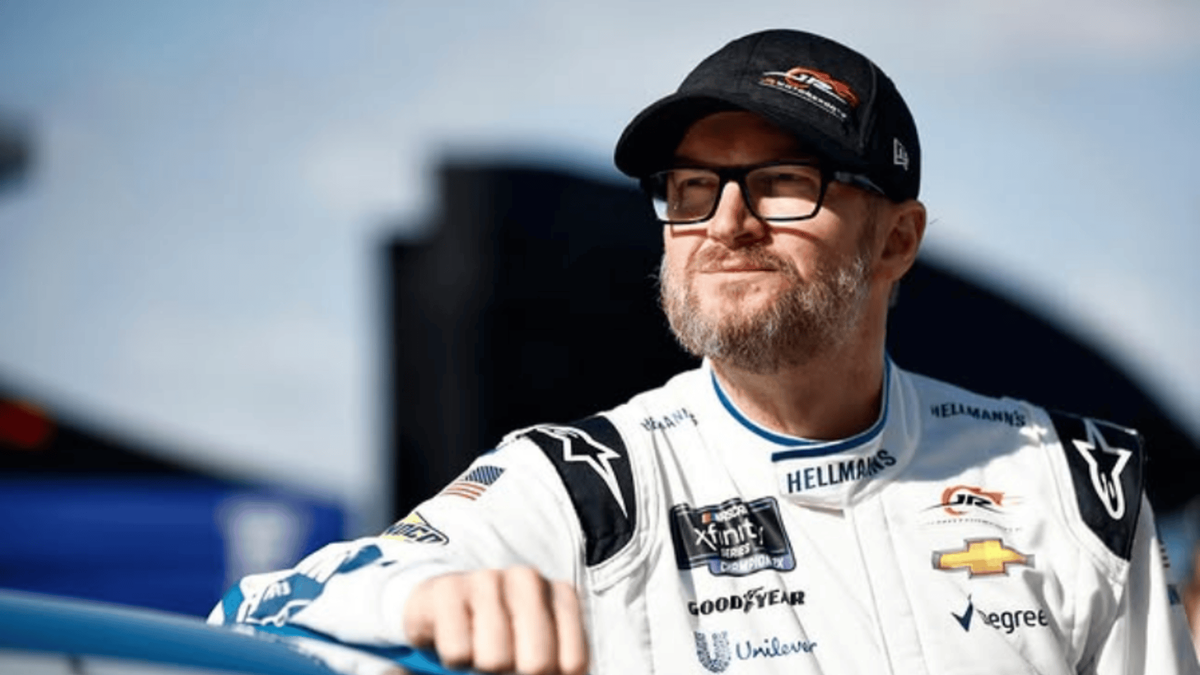

The Pocono Raceway this weekend harbored one of those unpredictable moments that NASCAR fans discuss for years: a Hall of Famer stepping into a crew chief role for the first time. Dale Earnhardt Jr., long retired from driving, has worn many hats: driver, podcast host, team owner, and broadcaster, and his unexpected stint atop the No. 88 pit box was driven not by long-term planning but by circumstance.
Watch What’s Trending Now!
When regular crew chief Mardy Lindley was suspended for one race due to two loose lug nuts on Connor Zilisch’s #88 Chevrolet after Nashville, the fill-in slot went to Jr., to the surprise of many in the paddock. Even before the weekend began, skepticism swirled. Kyle Busch quipped in a pre-race interview, “It’s all publicity, but spin it how you want. He’s just going to be a warm body sitting on top of the box.”
Yet who better to gauge Dale Jr.’s intent than 18-year-old Connor Zilisch, fresh off his first oval victory of 2025 under Jr.’s guidance at Pocono? As Zilisch’s first oval win surged him into Victory Lane, the moment became more than a novelty; it crystallized into a genuine on-track achievement with Jr. directly influencing the outcome.
ADVERTISEMENT
Although the notion of a celebrated ex-driver calling strategy might sound like theater, the evidence shows Earnhardt Jr.’s involvement was substantive. Connor Zilisch’s own description of their radio exchanges reveals energy and purposeful guidance. As Zilisch recounted in an Instagram Reel by Dirty Mo Media, “In stage one… you were more quiet. By stage three… you’re on the radio, ‘We’re gonna f—ing win this race.’ You were kicking me in the a– on the radio, and I could feel the emotion through the radio.” That level of engagement goes beyond waving from the pit box. It signals hands-on communication at pivotal moments.
View this post on Instagram
Strategic calls under pressure validated Jr.’s input. In the closing laps, Zilisch executed a decisive pass on his best friend, last year’s Rookie of the Year Jesse Love, as Zilisch mentioned, “One thing that Jesse did that I actually thought was really smart. I came off the corner at his left rear, and I pulled away so that I can time the side draft at the end of the straightaway to get the run and clear him into the corner.” By timing a side draft off the corner. Zilisch pulled his No. 88 JR Motorsports Chevrolet alongside Love’s car as they crossed the start/finish line with four laps to go, and then he took the lead for good with three laps remaining, .437 seconds ahead of the field. Decisions shaped during shootout restarts are where split-second thinking matters.
ADVERTISEMENT
Post-race, Earnhardt Jr. himself praised the team’s preparation. “Just a great job putting us in position to succeed… Connor Zilisch is going to be a big deal in this sport for a long time. A lot of fun for me today,” acknowledging both Lindley’s setup groundwork and his own role in fine-tuning calls under fire. These reflections underscore that Jr. was not merely ornamental; he stepped into a decision-making role and helped guide the late-race strategy.
Moreover, Earnhardt Jr.’s familiarity with track nuances lent credibility. As a driver, he knew how Pocono’s unique Tricky Triangle demands throttle control and restart tactics. His radio prompts about tire life, traffic, and timing mirrored what veteran crew chiefs emphasize. NASCAR Wire Service noted, “He’s the fifth crew chief this season to earn his first Xfinity Series victory,” with Jr. climbing down to help on pit stops, further illustrating active participation rather than passive oversight. This hands-on approach, coupled with Zilisch’s trust, affirms the role was authentic, not a staged cameo.
ADVERTISEMENT
Kyle Busch attempts to walk back comments after first crew chief victory
Kyle Busch’s initial dismissal stirred debate, but his follow-up comments reveal a tone adjustment. Speaking with Frontstretch, Busch clarified, though he’d called Earnhardt “a warm body sitting on top of the box,” he recognized Jr. was “way more involved than I thought or expected that he would be, so I’m happy for him. Look, I mean that’s cool. That’s an accolade. That’s an asterisk on his resume.” This damage control signals Busch’s acknowledgement that Jr.’s performance exceeded his assumptions.
Busch further emphasized respect for both Zilisch’s and Earnhardt Jr.’s efforts. “Connor, I sat next to him on the airplane ride home. He’s a great kid, and I respect that they were able to do that together.” By walking back on his initial comments, Busch aimed to neutralize any perceived slight and focus on the substantive result: a win forged through collaboration. His remarks also underline a broader point he’d made about suspension rules and modern communication, but ultimately, he conceded that Jr.’s involvement was more than symbolic.
ADVERTISEMENT
Dale Earnhardt Jr.’s debut crew chief role was born of necessity, yet it proved far from a gimmick. And helping Zilisch win his first oval race, Jr. became just the ninth person to win a NASCAR race as a driver, team owner, and a crew chief. This list includes heavyweights like Junior Johnson and Lee Petty, so it indeed was a historic race for the veteran driver.
ADVERTISEMENT
ADVERTISEMENT
ADVERTISEMENT

